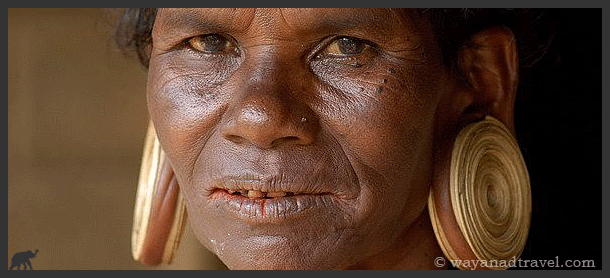Wayanad has the highest concentration of tribal in Kerala. They form 1/5 of the total population of the district.Till the arrival of settler peasantry from plains, Wayanad was essentially tribal. However today they form only 17 % of the total population of the district. Population of Scheduled Castes is relatively small in Wayanad in comparison with the rest of the districts of Kerala. According to 2001 census Scheduled Castes form 4.27% of the District.Among the tribal communities of Wayanad, those who were traditionally bonded laborers such as Adiyan and Paniyan, forest dependant community like Kattunaickan and artisan community like Urali Kuruman are the most vulnerable sections of tribal communities in Wayanad. Traditionally cultivating communities like Mullu Kuruman and Kurichians are relatively better off than the rest of the tribal population of the district owing to the resource base – agricultural land – they had. A vast majority of tribes in Kerala state hail from the Paniya tribal sect. Paniyas inhabit in the regions of Wayanad and the neighboring parts of Kannur and Malappuram. The name ‘Paniyaan’ means ‘worker’ as they were supposed to have been the workers of non – tribes. There were also tribes like Adiyas , Naikka , Kattunaikkan ,Kurichians and Urali kurumans . The particular Kurichyas tribe of Wayanad has a great martial tradition. They constituted the army of Kerala Varma Pazhassi Raja who fought the British forces in several battles. The descendants of those warriors are still expert archers. Recently various centres exhibit the excellence of Kurichya archery in many ways. The Kurichyas are the most developed among the adivasis and they also own small lands. The art performed by Kurichyas is `Nellukuthu pattu` which is very famous among the localities.,. The Paniya tribes have lot of similarities with the Eastern African tribes. They have their own language. It is only vocal and has no script. This Adivasi community almost entirely depends on agriculture labor for their livelihood. They usually taking bamboo rice fruits and vegetables from natural forest for their food . They have their own customs and rituals . Many of the excommunicated tribes were now educationally and economically better because of the welfare policies of Government.

Send me a message
Avatars by Sterling Adventures
